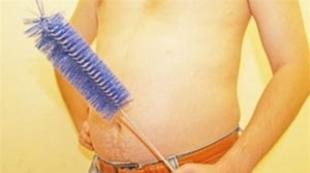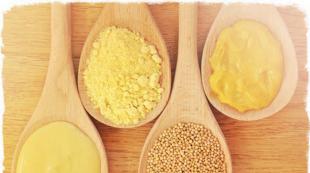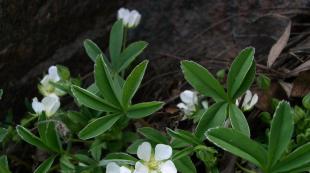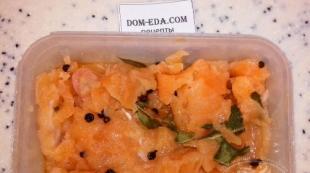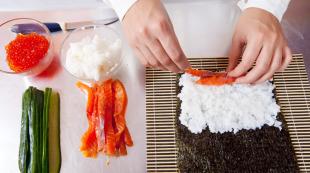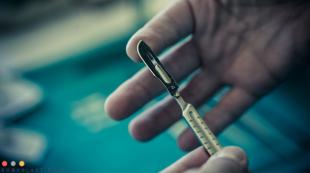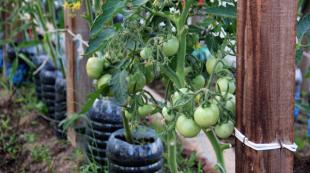How to disinfect the earth in a pot. Soil disinfection for seedlings
Before you start sowing seeds for seedlings, you need to prepare the ground. Experienced gardeners know that the health and development of seedlings largely depends on the quality of the land.
Someone buys land for seedlings in the store. When buying land, you need to pay attention to its composition, since often the main component of the purchased soil up to 90% is peat with mineral additives. It is best to use a multi-component mixture for growing seedlings, in which the main part is soddy soil, humus, and peat and sand are also added.
Many gardeners prefer to prepare the ground for seedlings on their own, in order to save money, and so they are sure that the basis for growing seedlings is prepared as it should. On your own, you can take meadow land for seedlings by removing 10 cm under the roots of plants; excellent loose soil is mined in the forest under the crowns of trees. However, many gardeners do not have the opportunity to take land except from their own garden. In this case, there is a risk of contamination of the earth with spores of fungi, bacteria, which cause diseases of vegetable crops. Also in the self-collected land there may be larvae and wintering pests, weed seeds.
There are many ways to disinfect the land for seedlings, but we try to choose not only effective methods, but not time-consuming to clear the land of diseases and pests.
1. The first way is freezing the earth . Soil for growing seedlings is collected in autumn in buckets, in breathable bags, in boxes. If you store the ground for seedlings in the basement or in the shed, then in winter, in the most severe frost of more than -20 degrees, the ground must be taken out into the street and kept for a week. After the first freezing, return the earth to warmth, where the temperature is above zero degrees, from such a drop, weed seeds and harmful microorganisms will begin to wake up, as in spring. After 7-10 days in warmth, again move the ground for seedlings to frost for a week and all awakened seeds, pathogens, pest larvae will die. It is recommended to freeze the soil 2-3 times, alternating heat and cold with a temperature of less than -15 degrees. You can freeze the soil in the freezer, but in this case you will be limited in volume.
2. Calcining or steaming the earth cleans the earth well from diseases and pests. There are ways to disinfect the earth in the oven, in the microwave and in a water bath by steaming.
When the earth is calcined in the oven, the earth is poured with boiling water, poured into a suitable container with a layer of about 5 cm and placed in an oven preheated to 90-100 degrees for half an hour.
More fast way calcining the earth in the microwave, but at the same time, the cultivation of the earth must be done in small portions of about 1 liter in a glass jar or in a plastic bag. Place the wet earth in the bag in the oven and turn it on for 4-5 minutes with maximum power. The container where the earth warms up should not be tightly closed; if you do this in a bag, then pierce it in several places.
The method of steaming the earth in a water bath is quite laborious, but perhaps someone uses it. The earth is poured into a cloth bag and placed on a wire rack or in a colander over boiling water in a saucepan, steaming the earth should last 30-40 minutes.
The most important thing in the method of warming up the earth is not to overestimate the temperature by more than 100 degrees, since in this case you risk getting sterile and dead soil free of harmful and beneficial micro-organisms.
3. The method of disinfecting the earth with disinfectants, for example, using potassium permanganate, is very popular, since it is the easiest . It is only necessary to dilute potassium permanganate in warm water to color pink, not dark and not too light and shed plenty of primer. After a while, watering is done with clean water.

All of the above methods of disinfecting the earth have one significant disadvantage - beneficial microorganisms die along with harmful microflora in the soil. , the earth becomes poor, not alive. Therefore, after any procedure for decontaminating the earth, we must introduce beneficial microorganisms and nutrients into it in order to revitalize the earth. You can use available biofertilizers - these are phosphobacterin, azotobacterin, Baikal M, Radiance.
4. The most gentle and simple way to disinfect the earth can be called biological , since preparations with beneficial bacteria are used in the soil, which will suppress the growth of harmful microorganisms in the soil, the soil becomes safe and at the same time does not lose its properties. Available and popular preparations for soil disinfection are trichodermin and phytosporin. This method can also be used as an additional one, after the procedure of freezing, calcining or watering with potassium permanganate in order to populate the earth with beneficial microorganisms.

5. In addition to disinfecting the land, in preparation for sowing, it is necessary to take care of the disinfection of containers in which you grow seedlings year after year. Plastic cups and containers must be thoroughly washed with the addition of Whiteness. Wooden boxes can be treated with a solution of potassium permanganate.
The next steps in preparing the land for growing seedlings are to determine the acidity of the soil and add various components that will make it the desired structure and enrich it with nutrients.
Further, read in the new issue how to prepare your own land for growing seedlings of tomatoes, peppers, eggplant, cucumbers and other crops. To do this, subscribe to the channel so as not to miss the release of new articles.
Disinfection of the earth - very important point only in this way can healthy and strong seedlings be grown. Tillage before planting seedlings allows you to destroy pathogenic bacteria, insect eggs, fungal spores, nematodes, protects against blackleg (a common disease of young plants).
What is disinfection for?
Every year more and more pathogenic microorganisms accumulate in the earth and its productivity deteriorates. Therefore, it is optimal to carry out a complete soil replacement every year. However, new soil, even purchased from a store, may contain various pests. What to do in this case?
If the earth cannot be changed, it must be cleaned of organic residues and thoroughly disinfected. It is worth noting that disinfection is recommended to be carried out, despite the replacement of the earth. This approach will help to avoid unpleasant surprises in the future.

Folk methods
Folk methods of soil disinfection are more environmentally friendly than chemical ones. However, they take a lot of time and do not always give a positive result. So, there are two ways to disinfect the soil.
Method number 1 - freezing.
Soil freezing is best done at an air temperature of -15 degrees, you can use freezer. For best result the procedure must be repeated 2-3 times. This processing method is not recommended for soil with biohumus. In addition, low temperatures will not get rid of late blight.
Method number 2 - heat treatment.
Most soil pests do not survive high temperatures. Thermally soil can be processed in 2 ways.
- Calcination. The earth is poured with boiling water, mixed and laid out on a baking sheet with a layer of 5 cm. Then the oven is heated to 90 degrees and the soil is calcined for half an hour.
- Steaming. This is a more gentle disinfection method. A bucket of water is put on fire, a grate with earth is placed on top, which is previously wrapped in a cloth bag. The soil should be steamed for at least 90 minutes.
Heat treatment must be carried out exactly according to the instructions, exceeding temperature regime or the duration of the procedure will lead to a deterioration in the quality of the soil. In addition, the land treated in this way, immediately before planting seedlings, should be populated with beneficial microflora.
The disadvantage of the method is that it makes the soil completely sterile and unsuitable for cultivation. Requires additional bacterial fertilizer.
To make the earth looser, after processing, scatter it on a paper surface and let it fill with air.

Disinfection with special means
You can also disinfect the earth with the help of chemicals: fungicides, insecticides or ordinary manganese.
- Fungicide treatment
This group of drugs consists of beneficial bacterial cultures that suppress diseases and increase plant immunity. Most often, "Fitosporin" is used, for processing 15 ml of the product is diluted in 10 liters of water. You can use other drugs - "Planriz", "Barrier", "Extrasol", "Gliocladin", etc. Before use, you should carefully study the instructions.
- Disinfection with insecticides
Popular drugs "Aktara", "Inta-Vir", "Thunder", "Spark". Insecticides have been successfully used to control soil pests. Before disinfection, the earth is loosened and moistened, the dry preparation is mixed with the soil before watering.
Soil treatment before planting seedlings is carried out in advance, no later than a month before the proposed work.
It is important to remember that any chemical treatment requires strict adherence to the instructions, the recommended concentration and consumption must be observed.
- Disinfection with potassium permanganate
Manganese does an excellent job of disinfecting a small amount of soil. To process 3–5 g of crystals, 10 liters of water are diluted, and then the soil is watered at the rate of 30–50 ml per 1 square meter.
Disinfect the earth with potassium permanganate should be 2 weeks before planting seedlings.
Potassium permanganate is a strong oxidizing agent, so it is not recommended to treat soddy-podzolic acidic soils. This method is best suited for the disinfection of chernozem and sod-calcareous soil.

An important point: reducing the acidity of the soil
Simultaneously with the disinfection of the soil, it is very important to equalize its acid-base balance. If the soil has an acidic reaction, then, even being sterile, it is susceptible to diseases such as keel and gray leg. To normalize the level of acidity of the earth to the norm of 6.5–7, the following means are used:
- dolomite flour;
- slaked lime;
- ash;
- hydrogel;
- perlite, vermiculite;
- humus tablets.
Do not forget to deacidify the soil before planting seedlings, otherwise diseases can develop very quickly even in sterile soil.

Common mistakes
Despite the disinfection of the soil, plants can get sick, grow poorly and die. What's the matter? Consider the 10 most common mistakes allowed when growing seedlings.
- Poor quality seeds. It is important to choose only high-quality seeds, otherwise they may simply not sprout or the plants will grow weak.
- Wrong choice of container. The container may not be suitable for seedlings if it is too cramped, large, poorly drained, or loose.
- No seed treatment. A significant part of the diseases is transmitted not only with the soil, but also with the seeds of plants.
- Failure to comply with the terms of cultivation. If you neglect the recommended terms for growing seedlings, then the plants will grow weak and simply will not take root during transplantation.
- Too deep planting of seeds. With excessive deepening, only a few seeds will germinate. The optimal depth should not exceed 2 seed diameters.
- Thickened crop. Seeds must be located at a sufficient distance from each other, otherwise the seedlings will not have enough space for normal development.
- Watering after sowing. Watering the soil is necessary before sowing. If you do this after, the seeds will go deeper into the ground and will germinate worse.
- Violation of temperature, lighting, watering and other growing conditions. It is important to remember that young seedlings are especially sensitive to temperature changes, excessive dryness of the soil, or excessive watering. It is also important to provide sufficient lighting, otherwise the seedlings will quickly stretch.
- Belated pick. In order for the aerial part to develop evenly, the plant must dive as soon as the second true leaf appears.
- Overgrown seedling. Such seedlings are more difficult to take root and may break during transplantation.
Land disinfection is not for the lazy. But if you let the cultivation of seedlings take its course and do not take elementary measures, you can ruin all the work. To prevent this from happening, the summer season must be opened in advance, and it should begin with tillage for seedlings.
There are many ways to disinfect the earth, you can steam it, harden it, freeze it or process it. chemical agent. However, they all have their own nuances and disadvantages. Therefore, in order to grow strong and healthy seedlings, you need to carefully study all the information and correctly apply it in practice.
In the process of transplanting a plant into room conditions or planting a new one is recommended to decontaminate soil mix before putting it in the pot. You could meet this information from all experienced gardeners - they often mention in passing the need to disinfect the soil or its individual components. Let's take a closer look at what the process of disinfecting the earth implies for indoor plants and what means can be used for this.
How to disinfect the ground for indoor flowers?
Considering the types of soil mixtures, we can safely divide them into purchased and homemade, prepared with our own hands. Purchased soil mixtures are often sold fully prepared for planting, so the grower does not need to decontaminate them, although there are known cases of plant infection with purchased land, so it’s still worth it to play it safe.
In the case of hand-picked homemade earthen mix, decontamination is a necessary factor. Firstly, the grower uses sand (river, garden, purchased) to form a loose mixture. Sand can become an excellent carrier of bacteria, larvae, mold spores, so it must be washed in water, treated with a solution of potassium permanganate, or heated in a pan.
Disinfection of the soil can be carried out with the same weak solution of potassium permanganate, or simply steam it. It is not recommended to use heating - only in the case of sand it is possible - especially with organic components.
Land cultivation for indoor plants can be carried out hot water. You can also hold the soil mixture in a cloth over hot water - the steam will remove fungi and bacteria.


How not to cultivate land for plants?
It is not recommended to decontaminate the soil mixture with Roundup or herbicides, as they kill and useful material, tend to accumulate, which will lead to further death of indoor, especially tender, plants.
The soil is cultivated, which does not contain bugs, insects, worms. The contaminated soil mixture should simply be thrown away. Such living creatures as enchitreus, centipede, nematodes, mealybugs, butterflies and May beetles are difficult to hatch. It is better to purchase uninfected soil and immerse your favorite plant in it.
Do not mix preparations that will acidify the soil with an earthy mixture with a neutral or alkaline reaction - you will create an unacceptable environment for the development of a plant that, for example, needs acidic soil for development. Carefully study the features of planting, as well as what ingredients the mixture should contain, before planting a plant in it and, moreover, in order to carry out different kind manipulation.
It is not recommended to take a soil mixture from under weeds or diseased plants, and treatment rarely helps - the smallest organic particles are preserved, which can become a breeding ground for pathogenic microflora for a plant.
We have all heard and read many times that before sowing seeds for seedlings, the soil must be disinfected, and this can be done in several ways. One of them is calcination in.
How to ignite the earth in the oven?
In this matter, you need to choose the right temperature and processing time, since you can overdo it and, in addition to fungi and pests, destroy all beneficial microorganisms, making the soil dead and barren.
So, at what temperature and how much to ignite the earth in the oven: the optimum temperature is 70-90ºС, the time is about half an hour. After that, the soil should be given time to resume the normal balance of beneficial microflora and only then used for planting.
It is also important to know how to ignite the earth in the seedling oven: for this, you first need to sift it, moisten it a little, then pour it on a metal sheet with a layer of about 5 cm and immerse it in a preheated oven.
Soil baking is a slightly modified version of calcination. In this case, the soil is placed in a baking sleeve and then sent to the oven. At the same time, moisture is retained in the soil and the effect of steaming with boiling water additionally appears, since the moisture in the soil heats up to 90-100ºС and, acting on it, additionally cleans and disinfects.
Do I need to calcine the ground for seedlings?
Soil disinfection is almost a key moment in growing seedlings. The health of future seedlings and adult plants directly depends on competent disinfection of the soil. Properly carried out calcination kills pathogenic bacteria, dangerous nematodes, insect eggs and pupae, fungal spores. In addition, this is how we fight in advance with the “black leg” - a dangerous enemy of seedlings.
As you can see, you should not neglect this stage, so that in the future you will not treat with regret and not throw away the lovingly grown seedlings.
Before planting seedlings, we still have time, so let's look at how to disinfect the soil. Not all summer residents every year, growing seedlings, buy new soil. It is clear that the healthier the soil, the stronger and stronger the seedlings themselves will be. And this means that the land from the garden is not a source of infections for plants, it must be disinfected before use.
At home, disinfection is carried out in the following ways:
- freezing,
- calcination,
- steaming,
- pickling.
We will analyze each method and note the advantages and disadvantages.
freezing
Prepare the soil in the fall by filling a bag with it. During severe frosts (15-20ºС), take the bag of earth outside or onto the balcony for several days. After the ground freezes, bring it into warm room for about a week. This is done in order to wake up wintering pests and weed seeds in a warm environment. The temperature contrast of the soil is arranged 2-3 times.
But this method has drawbacks.
- Frost has a negative effect not only on pathogenic microorganisms, but also on beneficial microflora. This means that this method is not suitable for soil, which contains vermicompost.
- No low temperatures will destroy late blight pathogens. They should be destroyed only by heat treatment.
Calcination
The soil is scattered on a metal tray with a layer of no more than 5 cm, and then the soil is spilled with boiling water and placed in an oven heated to 70-90ºС for 30 minutes. The temperature should not be higher than indicated, otherwise a higher temperature will lead to nitrogen mineralization and deterioration of soil quality.
The advantage of this method is the death of all microorganisms, they simply do not survive.

Steaming in a water bath
Despite the fact that the method is more gentle than calcination, it is also quite reliable. Its advantage lies in the fact that in addition to disinfection, it also saturates the soil with moisture.
The earth is poured into a colander and, gradually stirring, is kept over a pot of boiling water for 10 minutes. In this case, the colander is placed above the pan so that the bottom of the colander does not touch the water. Some gardeners combine both temperature methods, that is, they first steam the soil, and then take it out into the cold.
With such heat treatment, not only pathogenic, but also beneficial microflora dies. Therefore, the steaming procedure is carried out in advance to restore the soil before planting.

Etching
The easiest way to disinfect the soil. The idea of etching is to water the soil with a pink solution of potassium permanganate, diluted at the rate of 3 g per 10 liters of water. But remember that the solution processes only the surface layer of the earth and does not affect the bulk of pathogens.
Therefore, antifungal drugs (fungicides) are used for more thorough processing:
- Zamair,
- Renaissance.
The meaning of the treatment is to suppress the pathogenic flora with beneficial bacteria that are contained in these preparations, actively developing. The process takes 2-3 weeks, therefore, the processing is carried out in advance.
Soil disinfection in the microwave
The essence of the method lies in the fact that the prepared soil for seedlings is abundantly shed with a pink solution of potassium permanganate, and then put in the microwave for 3 minutes at high power. How to do it watch the video.
In conclusion, I will add. Remember that immediately after disinfection, the soil is sterile. But after a couple of weeks, the microflora in it is restored, and not the fact that it is only useful. Therefore, after disinfection, if you do not immediately use the soil, transfer it to a clean (sterile bag). And just before planting, add biohumus (1 liter per bucket of earth) or supercompost (1-2 cups per bucket of soil).
Tillage in a greenhouse
The soil in the greenhouse must be processed twice: in the fall, after harvesting, and in the spring before planting seedlings. Treat the soil with the following preparations.
Phytosporin treatment
How to prepare a solution for use, I described in detail in an article about phytosporin. It is better to buy it in the form of a paste. After dissolving a 100-gram package in 0.5 liters of water, you will get a dark brown liquid. The concentrated solution is diluted to prepare a working solution no earlier than a day later. This is necessary so that the living bacteria that were in the product are activated.
Immediately before tillage 1 tbsp. l. a concentrated solution is diluted in 10 liters of water and already with such a solution, the soil in the greenhouse is abundantly shed from the watering can. The greenhouse is closed for 14-20 days for the bacteria to do their job. After that, the greenhouse is opened and you can start planting seedlings.
The unused concentrated solution is removed in a dark place and stored there until the next use.
Disinfection with potassium permanganate solution
Disinfection is the easiest way to cultivate soil in a greenhouse. The essence of the method is to induce a pink solution of potassium permanganate and abundant watering of the soil. To bring such a solution, it is enough to dip a raw toothpick in potassium permanganate crystals, and then dissolve what is left on the toothpick in 1 liter of water. The soil is poured abundantly with the prepared pink solution, left for several hours.
Boiling water treatment
Another very simple and affordable way disinfecting the earth in a greenhouse - spill it with boiling water. It is enough to pour boiling water over the earth, and then cover it with plastic wrap. Under influence high temperature all harmful microbes will also die.
And there is another point that needs to be taken into account. Even after disinfecting the soil for seedlings, pathogens can be introduced with seeds. This means that before planting, the seeds should also be processed and then your seedlings will be strong and healthy.
